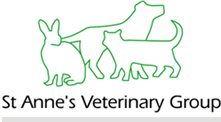What should I consider if I plan to travel or move house with my dog?
Both travelling and moving house with a dog require a great deal of planning to ensure that the change in environment is introduced as smoothly as possible.
Any change in routine can cause a huge change in your dog's behaviour: some become excited, others become anxious.
Before going anywhere, make sure that your dog has an identity collar and microchip. When going away, take enough dog food, and do not alter his diet. Take his own bed and toys so that he will feel "at home". Ensure that he is fully vaccinated and has had a recent health check-up. Look up the name and address of a local vet in your holiday area in case of an emergency. Consider parasite control and discuss this with the vet: you may not get many ticks and fleas at home in the city, but if you are holidaying in the countryside this could pose a significant problem.
Travelling with your dog
Many dogs enjoy car journeys if regularly taken for short distances, and they often get very excited when the car stops, as they want to explore their surroundings. Discipline of dogs is particularly important during travel. The highway code states that dogs must be suitably restrained so they cannot distract the driver, A seatbelt harness, crate, pet carrier or dog guard are a great way to do this. .
Do not allow your dog to stick his head out of the window, since he could be injured by passing vehicles, or try to jump out. The constant stream of air in his face can cause conjunctivitis. However, it is important that there is plenty of fresh air, so open the windows enough to allow circulation. There is no reason why your dog should not sniff this air, so long as the stream is not too strong - this is something that will keep him occupied! It is important that your dog does not become too hot: dogs are not able to control their body temperatures as well as humans. If you have air conditioning, then use it. If the weather is very hot, you may need to stop for a break and find a shady area to rest. Always carry a large container of fresh water so that you can offer it during these rests.
Your dog should be trained to sit quietly during journeys. Some dogs become over-excited, and their owners often respond to this by making a fuss of them or scolding them. In either case the dog enjoys the attention and regards it as a reward; this reinforces his bad behaviour. It is better to ignore him altogether or stop the car and walk away for a few minutes. Eventually he will learn to sit quietly. Good behaviour should be reinforced, so praise him whenever he is quiet. This training takes time and patience and requires many short journeys in the car. An assistant will be required since you should not be concentrating on your dog whilst you are driving.
If you have a puppy, you can avoid many of the discipline-associated problems from developing by getting your puppy used to travelling from an early age. Take your puppy on short journeys from about 6-7 weeks of age, as they are particularly sensitive to new experiences at this time. Make sure that your puppy's first journey is fun (i.e., not a trip to the vets for an injection!) Play with him in the car and give him treats before going anywhere so that he associates the car with fun. Gradually progress to sitting in a stationary car with the doors closed, and then to going for very short journeys.
What should I do about food and drink? What if my dog gets travel sick?
Travel sickness, as with people, is more common in young animals, particularly puppies. They tend to grow out of it with age. You should not feed your dog, whatever its age, for 6-8 hours (or give water 1-2 hours) before your journey. There should be plenty of ventilation both for keeping cool and to prevent nausea. You should stop frequently for your dog to urinate and defecate. You should not give food or drink during a journey unless the journey is excessively long (more than 12 hours); however, if it is a particularly hot day then you will need to offer water. Small drinks are acceptable if your dog is not prone to sickness. Always carry fresh water in the car even during short journeys, in case you are delayed.
Should I sedate my dog before travelling?
You should not sedate your dog unless you experience severe problems when travelling. Sedatives can be obtained from the veterinary surgeon, but only if you really need them: for example, if your dog gets excessively anxious about travelling, particularly if he has previously been involved in a car accident. By training your dog in the car in the months preceding your journey, you should be able to eliminate the need for sedation.
What should I do if I want to take my dog abroad?
From January 2021 if you wish to travel to the EU or Northern Ireland with your pet you will need an AHC. Your pet will need to be microchipped and vaccinated against rabies. You cannot travel with your pet until 3 weeks after the rabies vaccine. The AHC requires a veterinary examination within 10 days of travel, will last for trip of up to 4 months and can only be used for a single trip so you will need one each time you travel.




Social Media